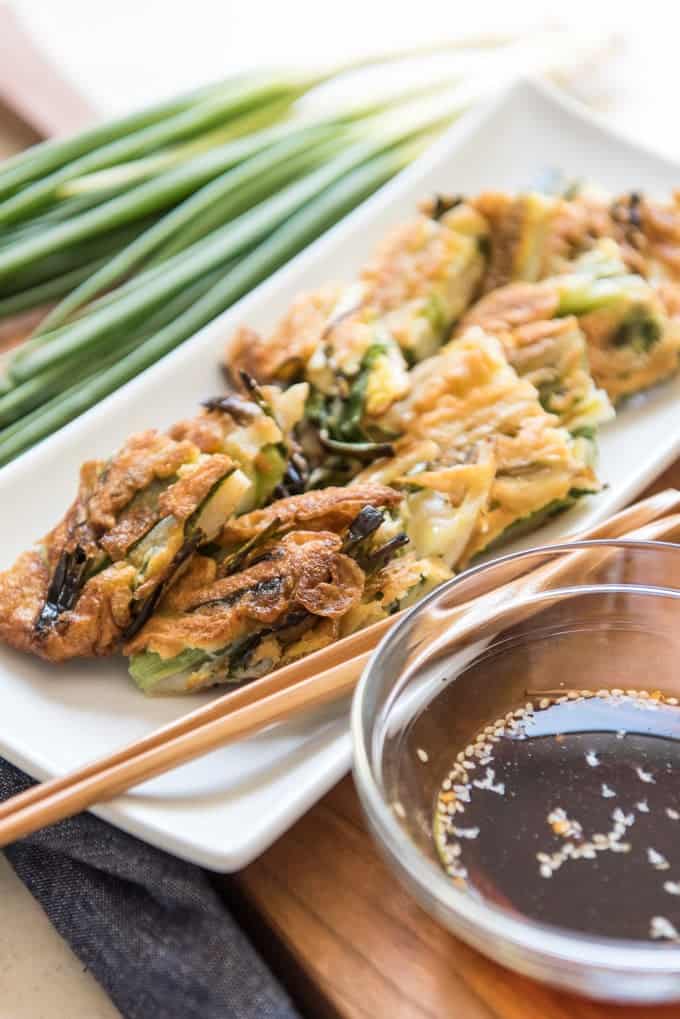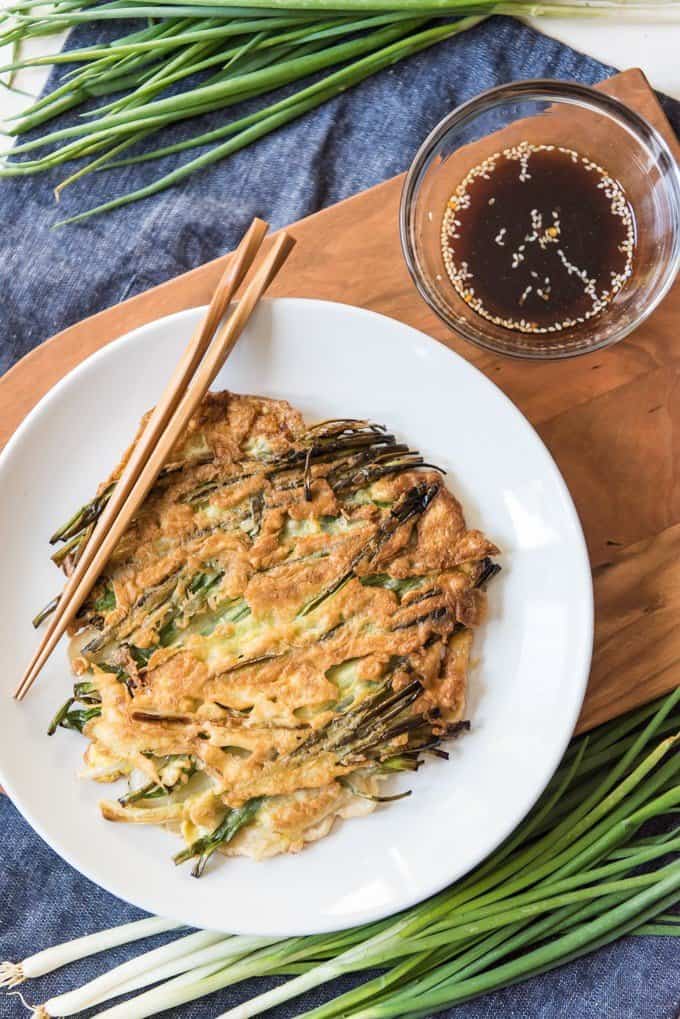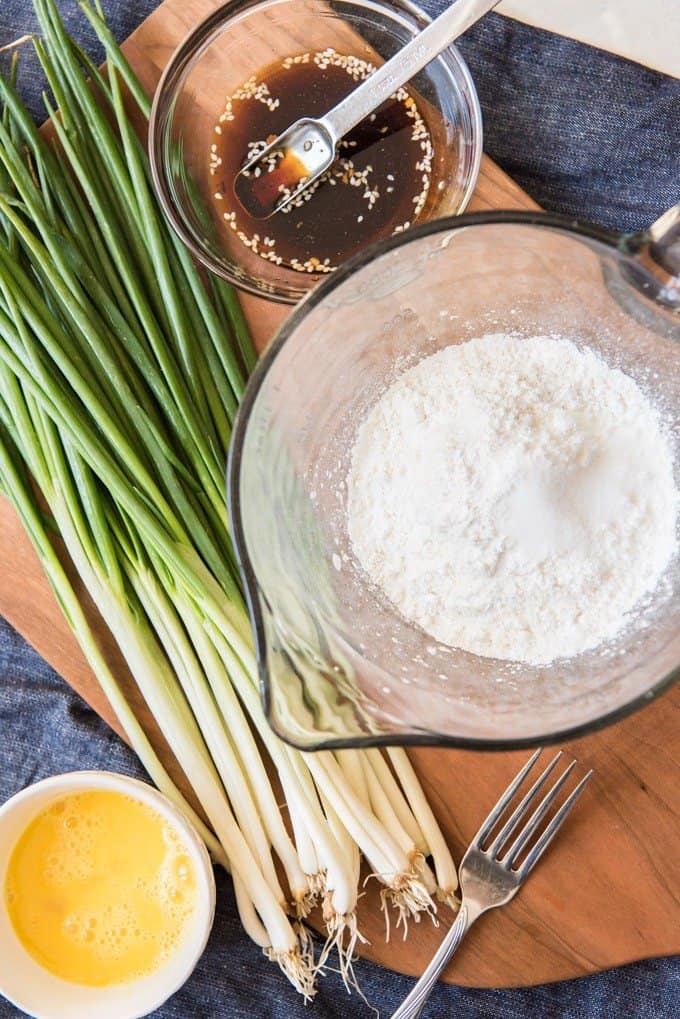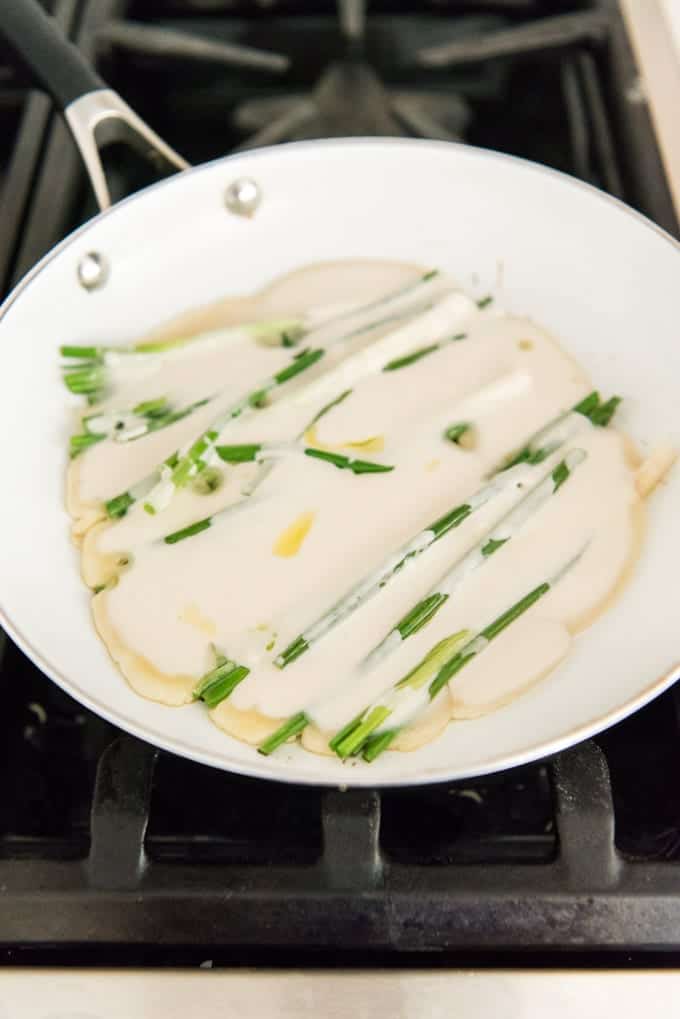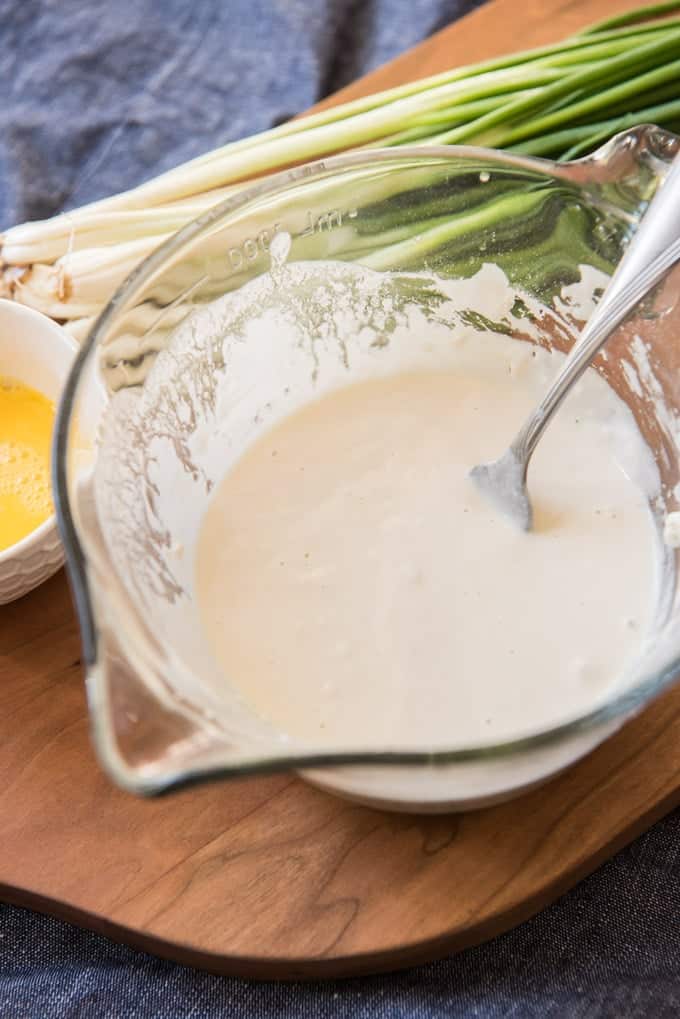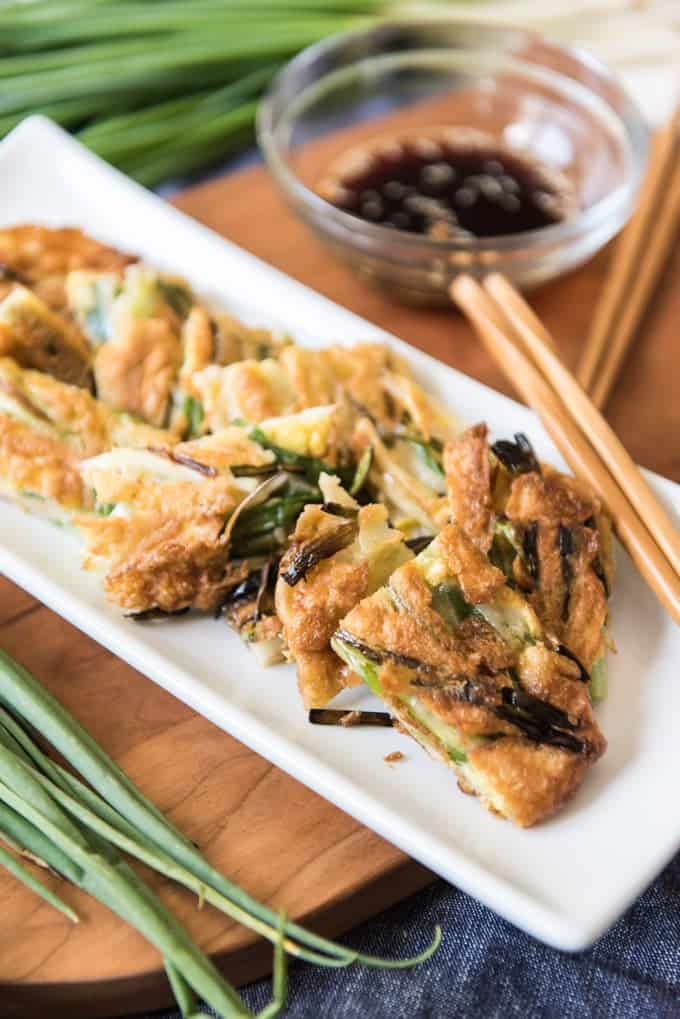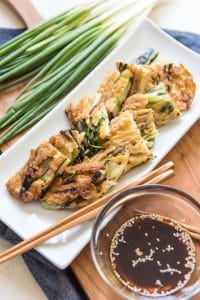If you are looking for some great appetizer recipes, be sure to also check out our Crispy Loaded Potato Skins, Bacon-Wrapped Jalapeno Poppers, and Homemade Mozzarella Sticks. I’m definitely not an expert when it comes to Korean food. In the first place, I’m not from Korea, and to make things worse, I’ve never even been there. But one thing I have learned through my culinary adventures and travel experience is that almost every culture has some form of pancake, whether it’s sweet or savory. So today I’m sharing a recipe for wonderful savory and crispy Korean pancakes! When I decided to do a week’s worth of Korean-inspired recipes as a way of learning about and celebrating a culture that is new to me, I knew I wanted to see what kind of pancakes Korea had to offer. Thanks to an awesome food blog called Korean Bapsang, which is written by a Korean-American mom, I found a great explanation about pajeon (sometimes spelled Pa Jun) with a recipe for a seafood scallion pancake that I used as my guide for this, much more basic, Korean pancake with scallions. While you can add in any vegetables (grated carrots, zucchini, thinly sliced peppers, kimchi or potatoes) or protein (especially seafood, like shrimp, squid, oysters, and clams) that you like to your pajeon, at it’s most basic level it is just a savory pancake, fried in a little bit of oil, with a bunch of scallions in it.
Is there a difference between scallions and green onions?
Nope! Scallions and green onions are actually the same thing! They are long, with a white stem end that does not bulge out (unlike a Spring Onion, which actually is different from a green onion or scallion). Scallions are not as intense as regular onions and can be used raw or cooked. The whole thing (both white and green parts) can be eaten, and scallions are frequently used in many types of Asian cuisine, including Korean. Scallions are a vegetable that are almost always on hand in my crisper because I use them all the time in recipes or just to throw into my eggs or tuna or quesadillas or whatever. If your scallions are really thin like the ones in these pictures, you can throw them into the pancake whole, just chopping them once in the middle so they fit in the pan. If you have thicker scallions on hand, you might want to slice them in half lengthwise.
What makes for a crispy Korean pancake recipe?
One of the best things about this savory pancake is the texture, which is achieved through a combination of factors. The first is actually frying the pancake in a little hot oil in a pan. If you go to flip the pancake and all the oil has been absorbed, you may want to add a little more to the pan to cook the other side. Another trick is to add some cornstarch to the pancake batter, which also helps achieve a crispiness that you just don’t get with flour alone. And a third technique that Hyosun at Korean Bapsang talks about is the importance of using ice cold water in the batter. That cold batter hitting the hot oil results in a crispier pancake. Korean pancakes are a wonderful, savory snack and something super easy to whip up with pantry staples, as long as you have some scallions sitting around in your fridge. They are also a great, simple way to try exploring another culture that I know I for one am not nearly as familiar with as others!
More Korean Recipes You’ll Enjoy
Korean Beef Tacos (Bulgogi) Hotteok (Korean Sweet Pancakes) Oven Baked Korean BBQ Chicken Wings Slow Cooker Korean Beef Short Ribs (Kalbi)
Let me know what you thought with a comment and rating below. You can also take a picture and tag me on Instagram @houseofnasheats or share it on the Pinterest pin so I can see.
